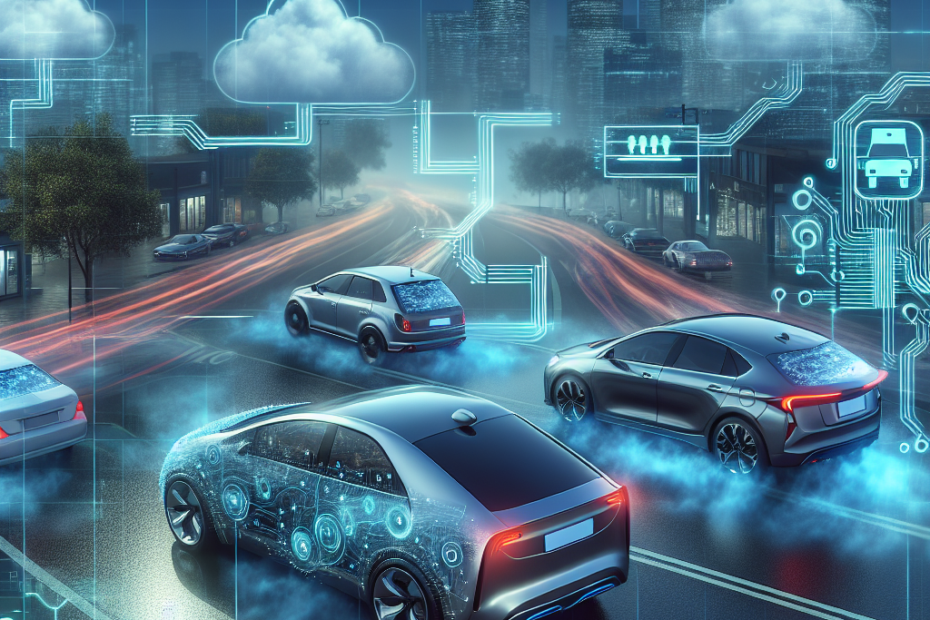“`html
Introduction to Edge Computing in Vehicles
Edge computing is changing the way connected cars operate. They use this technology to process data closer to where it is generated. By doing so, they are able to make quick decisions and improve performance. Edge computing vehicles are part of a larger shift towards more efficient, low-latency data processing solutions.
What is Fog Computing?
Fog computing is an extension of cloud computing. It brings data processing closer to the source of data generation, such as sensors in connected cars. This helps in processing data locally rather than sending it to a distant data center. Cisco coined the term “fog computing” to describe this decentralized approach. According to a 2022 report from Statista, the global fog computing market was valued at around 300 million USD and is expected to grow rapidly.
How Edge Computing Vehicles Work
Connected cars are equipped with numerous sensors, each generating vast amounts of data. Edge computing in vehicles involves placing computing resources closer to these sensors. Here are some key features of how this system functions:
- Local data processing: Cars analyze data locally to make quick decisions.
- Reduced latency: Faster data processing ensures better real-time responses.
- Enhanced privacy: Sensitive data is processed locally, reducing exposure to external threats.
- Efficient data handling: Only necessary data gets forwarded to the cloud for further analysis.
Benefits of Edge Computing in Connected Cars
Edge computing offers several advantages for connected cars, facilitating advancements in vehicle technology:
- Improved Safety: Real-time data processing can lead to quicker responses in hazardous situations, reducing accidents.
- Optimized Traffic Management: Vehicles can communicate with each other to manage traffic flow efficiently.
- Enhanced User Experience: More accurate navigation and personalized services improve the driving experience.
- Reduced Cloud Dependency: Processing data on-board lessens the strain on centralized cloud systems.
Challenges and Solutions
While edge computing holds promise, it also poses several challenges. Here’s a brief look at these challenges and their solutions:
| Challenge | Solution |
|---|---|
| Device Security | Implement robust cybersecurity measures and regular software updates. |
| Data Management | Use effective data sorting and filtering techniques. |
| Technology Integration | Ensure compatibility of different hardware and software components. |
Future of Fog Computing in Vehicles
The future of fog computing in vehicles is promising. With advancements in machine learning and artificial intelligence, connected vehicles will soon become more efficient and autonomous. By 2030, researchers predict that over 95% of new vehicles will be connected worldwide, as per a report by P&S Intelligence.
Key Takeaways
- Fog computing brings data processing closer to its source, enhancing connected vehicles’ performance.
- Edge computing allows real-time data analysis, improving safety and user experiences.
- While there are challenges like security and data management, innovation continues to provide solutions.
- The future points to more advanced and autonomous connected vehicles.
FAQs
- What is edge computing in vehicles?
Edge computing in vehicles refers to processing data closer to where it is generated within the vehicle, reducing latency and increasing efficiency. - How does fog computing differ from cloud computing?
Fog computing processes data closer to the source (e.g., car sensors) rather than relying solely on centralized cloud data centers. - What are the benefits of edge computing for connected cars?
It improves safety, traffic management, user experiences, and reduces dependency on cloud data centers. - What are the future projections for connected vehicles?
By 2030, it’s expected that 95% of vehicles will be connected globally. - What challenges does edge computing in vehicles face?
Some challenges include device security, data management, and technology integration.
“`
This blog post covers the essentials of fog and edge computing in vehicles, offering a comprehensive view of current trends, benefits, and future predictions.
